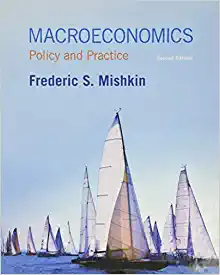Question
Background of Case Double-dip recession possible as COVID lockdowns ravage Australian economy - Having escaped a technical recession for nearly three decades, Australia is at
Background of Case
Double-dip recession possible as COVID lockdowns ravage Australian economy -
Having escaped a "technical" recession for nearly three decades, Australia is at risk of two in the space of just over a year. The first official confirmation of economic trouble came midway through last week, when the Bureau of Statistics released its June retail sales report. Retail trade fell by 1.8 per cent in the month much higher than market expectations of a small fall, with food retailing the only sector to record a rise as people stopped eating out and cooked at home instead. Not surprisingly, the largest fall was in Victoria (-3.5 per cent) which was in lockdown through early June, but even in NSW, sales fell by 2 per cent with the lockdown in Greater Sydney starting late in the month. So, is the contraction in the retail sector the canary in the coal mine? The Commonwealth Bank's head of Australian economics Gareth Aird says lockdowns, by their very nature, grind much economic activity to a halt. "By definition, if you're telling households and businesses to stay at home and stop doing things then you'll get less production," he notes. The vast majority of economists now expect a negative September quarter followed by a rebound in December. A key assumption many are making to arrive at this forecast is that the current lockdowns won't be significantly extended and there won't be any further major lockdowns later this year. Downside risks There is also the possibility we are already in recession. If total economic output, or GDP, contracted in the three months to June (something we won't know until September), then it's a virtual certainty that we are now sitting in recession.
The above is an extraction from an ABC article. With your experience and knowledge in Economics, you have been tasked by the House of Representatives Economics Committee to undertake the following:
1) Using data drawn from the Australian Bureau of Statistics (ABS), present relevant diagrams showing Australia's economic growth from September 2020 to June 2021. Describe the trend and examine some reasons behind the cyclical movements and their impact on each of the expenditure components of GDP. You are expected to use quarterly figures.
2) Discuss and critically analyse the current state of affairs (as described in the article above), the effectiveness of fiscal and monetary policies since September 2020; and how they influenced Australia's economic growth. Note: You do not need to cover all policies. Just select those that are appropriate.
Some key elements:
- You do not have to relate Question 1 to the background, although you are free to do so.
- For fiscal policy, discuss the effectiveness of the stimulus package since September 2020 and the budget statement 2021; and how these policies relate to economic growth.
- For monetary policy, discuss the effectiveness of RBA's monetary policy since September 2020.
- It is essential to illustrate your analysis with aggregate demand-aggregate supply models (AD-AS models). Other appropriate models may be used but not essential.
- Discussion and analysis must be supported and referenced using peer-reviewed scholarly sources. See document "Criteria Reference Assessment and other essential information for the Take Home Assessment" for further details and a starting point. Note that scholarly references from previous crises may be suitable sources to evaluate the current situation, where academic publishing has not yet caught up.
- Consider the relative contribution of individual criteria of the CRA to Questions 1 and 2, and note the relative weight of the questions. The length of your answers should be reflective of that. For example, 35 marks out of 100 for Question 1 would suggest that Question 1 should take up 35% of the one doublesided page
Step by Step Solution
There are 3 Steps involved in it
Step: 1

Get Instant Access to Expert-Tailored Solutions
See step-by-step solutions with expert insights and AI powered tools for academic success
Step: 2

Step: 3

Ace Your Homework with AI
Get the answers you need in no time with our AI-driven, step-by-step assistance
Get Started


